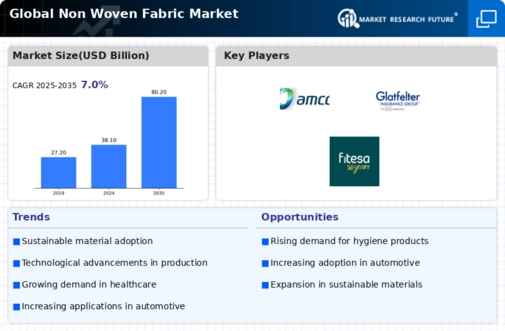Nonwoven Fabrics Market Summary
As per Market Research Future Analysis, the Global Non Woven Fabric Market was valued at USD 38.10 Billion in 2024 and is projected to grow to USD 80.21 Billion by 2035, with a CAGR of 7.00% from 2025 to 2035. Key drivers include increased domestic demand for sanitary goods and rising healthcare sector needs. The COVID-19 pandemic has further accelerated demand for non woven textiles, particularly in medical applications, hygiene products, and personal care items. The Asia-Pacific region is expected to witness significant growth due to rising hygiene concerns and increased adoption of sanitary products.
Key Market Trends & Highlights
The non woven fabric market is experiencing robust growth driven by healthcare and hygiene demands.
- Market Size in 2024: USD 38.10 Billion.
- Projected Market Size by 2035: USD 80.21 Billion.
- CAGR from 2025 to 2035: 7.00%.
- Asia-Pacific market accounted for USD 12.5 Billion in 2021.
Market Size & Forecast
| 2024 Market Size | USD 38.10 Billion |
| 2035 Market Size | USD 80.21 Billion |
| CAGR (2024-2035) | 7.00% |
Major Players
Key players include Dow, DuPont, KCWW, Berry Inc., Glatfelter, Fitesa, WE GmbH & Co. KG, Ahlstrom-Munksjö, Kimberly-Clark Corporation, Chevron Corporation, Polymer Group Incorporation, Asahi Kasei Corporation, Fibertex.














